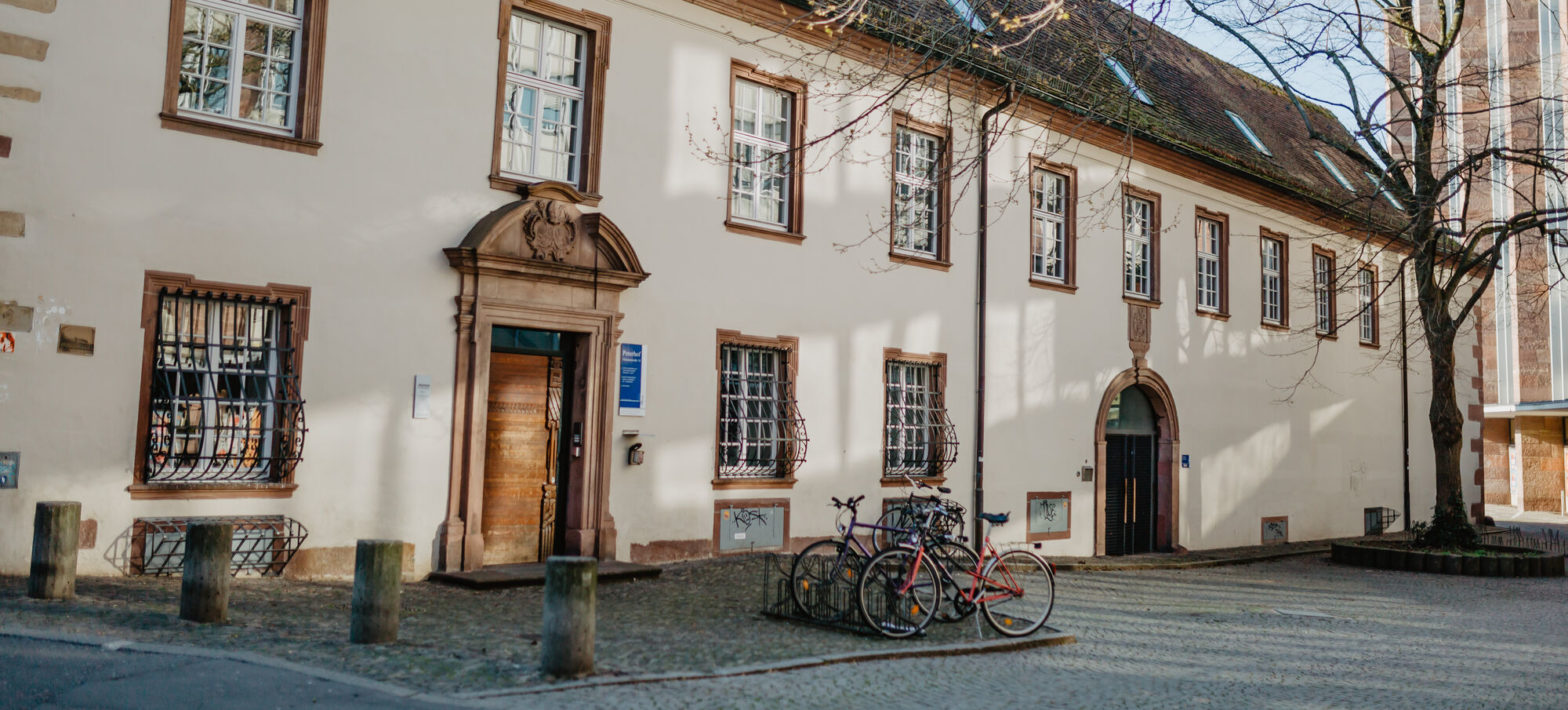A Brief History of the Historical “Peterhof” of the University of Freiburg
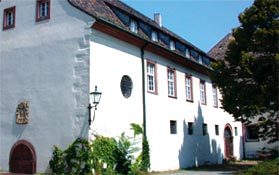
The „Peterhof“ is one of the university’s numerous historical buildings. The recent renovations have created space for offices for the Faculty of Law, seminar rooms, and the university’s new cultural center in the cellar, the „Peterhof Cellar.“ The „Peterhof“ is one of two former monastery buildings owned by the university. The other is the house „Zur lieben Hand,“ which once belonged to the St. Trudpert monastery in Münstertal.
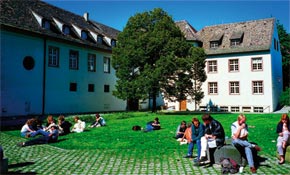
The „Peterhof“ used to belong to the St. Peter monastery in the Black Forest and was once three times as large as it is today. The only remaining structure from the former monastic complex is the main building on Niemanstraße, including a deep cellar with a vaulted ceiling, a spiral staircase, and a Renaissance chapel.
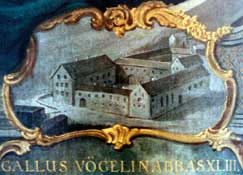
The recent renovations revealed remains of townhouses from the city’s early history below the baroque alterations and extensions to the building. In medieval times there were three houses on the site of the current Peterhof whose two-story cellars were accessible through large archways in the courtyard. These 12th and 13th century houses were bought up systematically by the St. Peter monastery starting in 1492. Once the monastery had succeeded in purchasing the corner house „Zum Hasen“ in 1585, Abbot Gallus Vöglin converted the row of houses into a representative monastic complex. The medieval townhouses received new facades with crow-stepped gables and a spiral staircase.
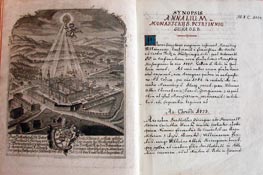
Even more magnificently adorned was the chapel, which is a freestanding structure identifiable by its round windows. Underneath it is the vaulted archive cellar, which was also used to secure valuables in times of crisis. Functional buildings such as a stall, barn, and granary were connected directly to the main building. The various buildings illustrate the wide range of functions the Peterhof was intended to fulfill. It served as a storehouse and marketplace for the monestary’s sources of income, such as livestock and grain. The deep cellars were used to store wine. The administrators and friars studying at the university lived in the main house. In addition, the abbot had a luxurious apartment with a magnificent ceramic stove.
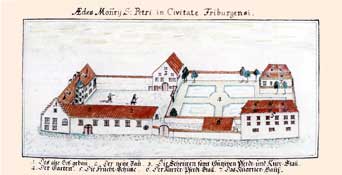
In 1730, Johann Georg Bechter, master builder of the City of Freiburg, was commissioned to build „a new wine cellar and archive above it“ between the „old building,“ i.e. the front building, and the chapel. On the second floor, „several chambers“ were furnished „for the personal use of the abbot.“ The year „1731“ is still engraved into the gate of this wing of the complex today along with the initials of Abbot Ulrich Bürgis. This abbot also planned several other, even larger new structures. Just under 30 years later, Abbot Philipp Jakob Steyrer took up the project again but in reduced form. In 1766, master builder Johann Jakob Häring modified the facades and the roof to match one another and added a new main entrance, the one still in use today. These renovations had representative intentions, particularly in the interior of the building, where a double flight of stairs emulated those of contemporary castles.
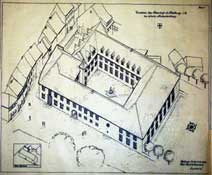
In 1806 the Peterhof was put under state control along with the entire monastery, and the provincial administration of the Grand Duchy of Baden moved in. People who owed the clergy rent or tithes now had to pay them to the state at the same place. In 1869, after a brief interlude as a schoolhouse, the military began using the former Peterhof. In 1925 the Viticultural Institute of Baden moved in to the main building, while the stall was turned into a youth hostel.
The Peterhof suffered considerable damage from the air raids on 27 November 1944. The roof and all of the beamed ceilings went up in flames, leaving only the foundation walls and the vaulted rooms, such as the cellar, the archive, and the chapel. When the Peterhof was rebuilt between 1957 and 1961, the remaining structures were integrated into the new building. The exterior preserved the old forms, while the interior was remodeled into a modern university building. The original cellar has now been carefully reconstructed by the University Building Authority and opened for use as an attractive space for events.
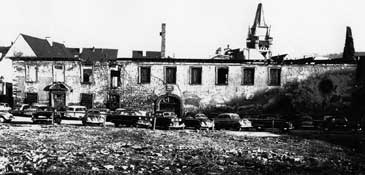
The captivating atmosphere of the visible stone vaulted ceilings was preserved in the renovated cellar. A modern air conditioning and heating unit is hidden under the new slate floor, and free standing light pillars provide a welcoming ambiance.
A wheelchair-accessible elevator, a new staircase at the entrance, emergency exits, and full adherence to current fire protection guidelines are just a few of the features of the unobtrusivae but effective modification of a historical wine cellar to a modern multifunctional event space. Thanks to the renovations, the Peterhof Cellar now shines again in new splendor.
Text: Frank Löbbecke / Stephanie Zumbrink / Thomas Zipse


